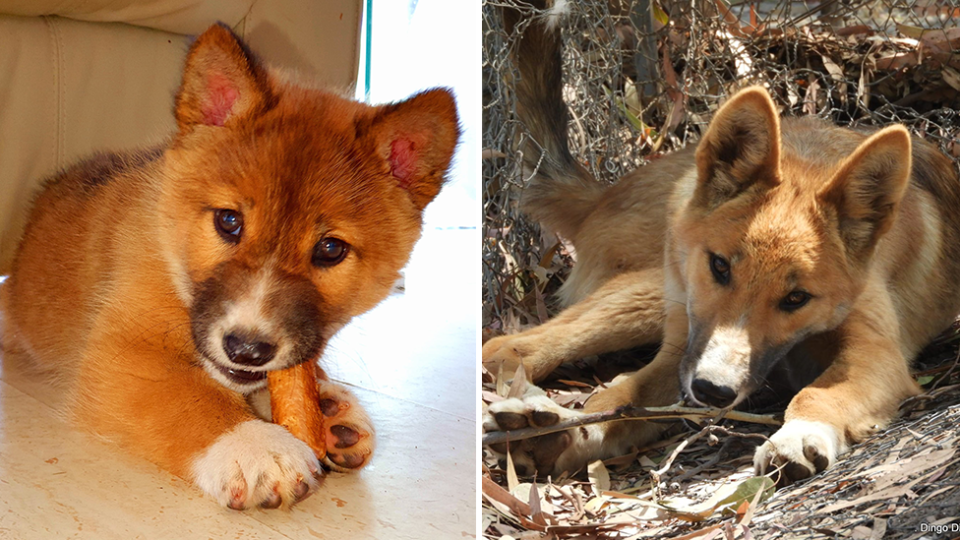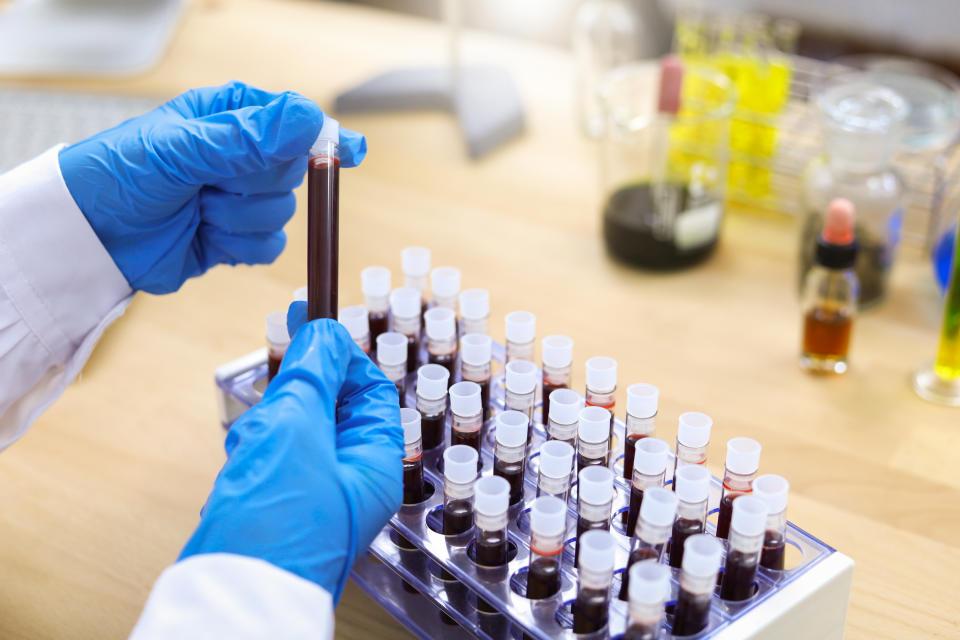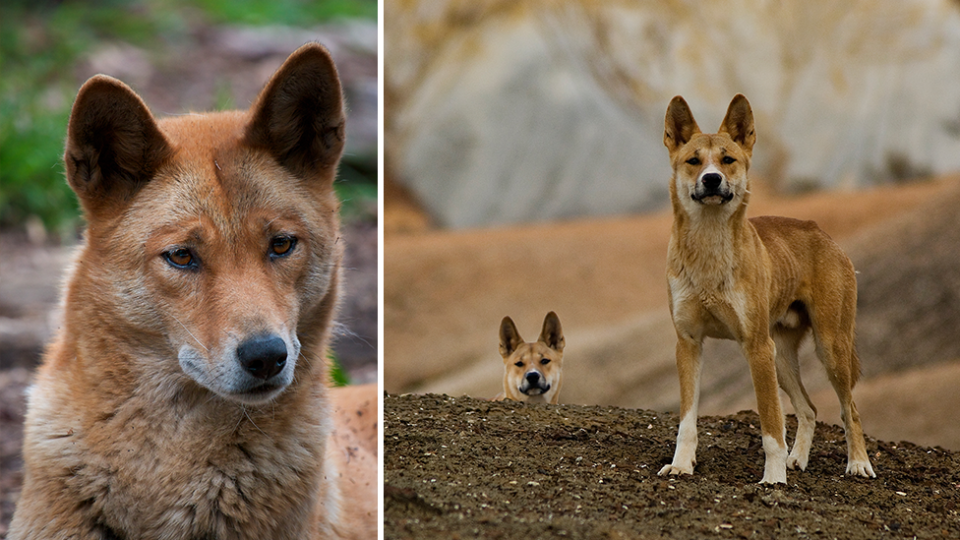'It's devastating': Concern for threatened animal amid state's trapping plan
WARNING - GRAPHIC CONTENT: There are fears for the future of newly discovered genetically pure dingoes in Victoria, after the government began “wild dog” trapping close to its home range.
Although Victoria’s dingoes are classified as vulnerable to extinction, the species has been declared unprotected across much of the state – meaning they can be baited, trapped and shot within 3km of private land.
While the government acknowledges the environmental importance of the dingo as an apex predator, eradication is encouraged when the animals are seen near livestock or residential areas.

The elusive animals around Wandiligong, 213km northeast of Melbourne, were originally thought to be wild dogs, that was until DNA testing determined that a lost puppy, found in a resident's backyard, was actually a pure bred dingo.
The young animal, named Wandi, garnered international attention after dingo experts theorised he became separated from his parents after being dropped by a wedge-tailed eagle.
Now Wandi’s keeper, Lyn Watson, who runs the Dingo Discovery Sanctuary and Research Centre, is concerned that nearby dingo trapping could hamper research efforts and possibly claim the lives of the pup’s family.
“It's terrible, it's devastating. I'm shocked that the Victorian Government would be trapping here,” she said.
“It’s the very next valley from where Wandi was found.”

The Wandiligong find isn’t the only new discovery in Victoria of pure dingoes according to Ms Watson.
Private testing commissioned by her sanctuary, examined 31 samples taken from dead “wild dogs” found strung up to a tree in the Omeo region, 65km east of Wandiligong.
“They came back pure dingo,” Ms Watson said.
“It’s clear that a couple of them may have been stray dogs – nothing like a dingo and those tested not pure, but everything else tested quite pure.”
Trapping underway after sightings of dingoes in residential areas
Government guidelines note that wild dogs and dingoes are visually similar and that culling programs “have the potential to directly impact on dingoes”.
With purity testing of dingoes improving, due to a new protocols involving over 300,000 DNA markers, researchers say a detailed investigation of the species’ genetics across Victoria is needed to determine significant populations.
Victoria’s environment department (DELWP) did respond to questions about whether they would DNA test trapped wild dogs for dingo ancestry before shooting them.
They indicated they are not focusing on the genetic-make up of dingoes, but rather the “functional role” they play as native apex predators in ecosystems and as a culturally important species to our Traditional Owners and Aboriginal Victorians.
The trapping is taking place within the Ovens Wild Dog Management Zone, where government figures indicate there were seven instances of livestock maimed or killed by dingoes between 2018 and 2019.
DELWP initiated the trapping near Wandiligong on May 4 this year after receiving four reports of a small number of wild dogs near residential areas and will not impact on areas outside the management zone.

“The wild dog control measures scheduled for the Mt Beauty, Tawonga and Tawonga South areas next week are in response to community concerns about an increase of wild dog sightings and wild dogs moving into residential areas harassing domestic animals,” a DELWP spokesperson said.
“The wild dog program manages specific predation impacts on livestock and is separate from any dingo conservation work.”
University of NSW research fellow, Dr Kylie Cairns, told Yahoo News Australia that the trapping was “concerning”, given that surveys are yet to be undertaken to identify the presence of important hotspots with pure / high dingo ancestry.
“The risk of hybridisation is increased when populations are subjected to lethal control, particularly if the population is close to areas where there might be roaming domestic dogs,” she said.
“It is also concerning to be carrying out trapping, baiting, or lethal control during breeding season.
“This could result in increased pressure for an ‘in season’ female to breed with a roaming dog if her mate is killed suddenly.
‘It could also leave a female who has mated alone and therefore unable to raise her pups.”
Expert believes genetic diversity key to dingo health
Two of the main types of dingo endemic to Australia are the slender northwestern group which is found in arid zones, and the alpine dingo which is heavier set.

Deakin University’s associate professor in wildlife conservation, Dr Euan Ritchie told Yahoo News Australia that while the two dingo types are classified as the same species their outward appearance differs due to their environment.
For those in the arid zone, being big and heavy and having a thick coat, is not advantageous, whereas in the alpine zone the animals need to conserve body heat.
'Can't sleep at night': Controversial 'deadly' fence dividing opinion on 'wild dogs'
'$20 per scalp': Dingo bounty flyer sparks concern over animal's future
The battle to save Australia's dying koalas continues amid coronavirus crisis
“Now, of course, the dingo in Victoria is a listed threatened species and that is the alpine dingo which also occurs as in forests as well as alpine environments,” Assoc Prof Ritchie said.
“The point really, is that with any species, we should be aiming to conserve ecological and evolutionary differences.
“We should be aiming like any species to conserve variation in population because that is one way to actually promote resilience.
“For any species, if we start to lose genetic diversity, that means that if change comes along, whether it's disease or something else, they have less ability to respond to that change because they've lost that genetic diversity.
“So we should be trying to aim to conserve that.”
Do you have a story tip? Email: newsroomau@yahoonews.com.
You can also follow us on Facebook, Instagram and Twitter and download the Yahoo News app from the App Store or Google Play.




